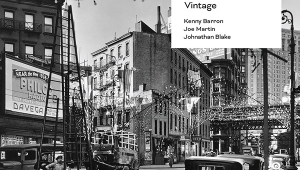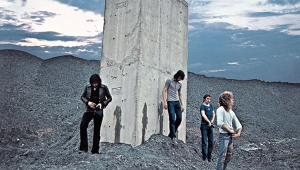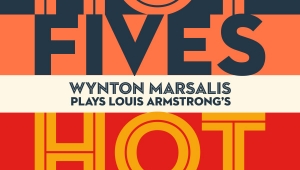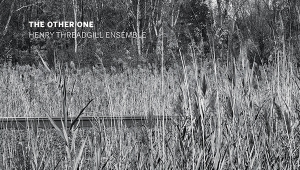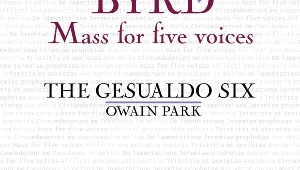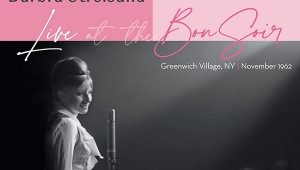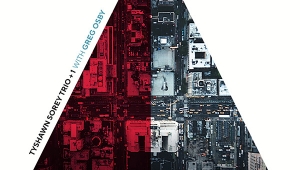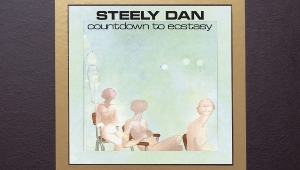| Columns Retired Columns & Blogs |
Recording of June 2000: Shostakovich: String Quartets 1-15
SHOSTAKOVICH: String Quartets 1-15
Emerson String Quartet
Deutsche Grammophon 289 463 284-2 (5 CDs). 1999. Emerson Quartet, prods.; Da-Hong Seetoo, eng. DDD. TT: 5:59:19
Performance *****
Sonics ****
Half-joking aside, this set may represent a breakthrough in the performance history of the quartets. If you hear a note of doubt there, it's because the world is still coming to terms with these inward, enigmatic works; one can't be sure exactly what a "breakthrough" might sound like. When Shostakovich was alive, this music was known almost exclusively through the recordings of the Borodin Quartet, and was rarely heard in concert here. No doubt Western audiences were particularly puzzled by their seemingly inconsequential surfaces, intermittent lack of thematic argument, warped folk dances, and formal mutations.
Emerson String Quartet
Deutsche Grammophon 289 463 284-2 (5 CDs). 1999. Emerson Quartet, prods.; Da-Hong Seetoo, eng. DDD. TT: 5:59:19
Performance *****
Sonics ****
Time to refill your Zoloft prescription: There's a new set of Shostakovich string quartets on the market, and it's by the Emerson Quartet, which means these musical progeny of the composer's most repressive, depressive, anxiety-ridden moments will be rendered with the unflinching clarity we've come to expect from the group's recordings of Bartók and Ives.
 | |
Indeed, it seems that, in these spontaneous, mercurial works, anything goes. Numbers of movements range from one to six (some last as little as a minute), and total playing times from 16 to 35 minutes.
And who knows what it all means? Shostakovich biographers have revealed that the quartets were meant to be even more subversive than the symphonies—thicker with double meanings, and deeply personal in their expression of his inner torment at the hands of Stalin and others who attempted to control the character of his output. Scholars say with authority that Quartet 8, by far the most popular of the 15, was written as a musical suicide note. It's loaded with quotations from other works, but assembled with such intensity, economy, and desire to communicate that the act of composition probably headed off the despair that inspired it; Shostakovich survived to write seven more quartets. Knowing this makes us listen more intently and sympathetically for extramusical references.
The problem is, if these works are indeed written as a coded soundtrack to the collective secret consciousness of Shostakovich and his generation, what about musicians and listeners who weren't part of that world? In many ways, Shostakovich's world is more remote to us than Mozart's Vienna. The Borodin (BMG 40711 2) and Beethoven (Consonance 81-3005/9) quartets worked with the composer, and in those recordings, one hears subtext that can never be written, and can't in good conscience be copied by other quartets without such interpretative touches sounding second-hand. So is it possible that these recordings are the only form in which the music can be fully experienced? Previous cycles by westerners have been inconclusive: the Brodsky Quartet's slick cycle (Teldec 9031-71702-2) suggested that the answer was "yes."
And the Emerson set? In the majority of the quartets, it's "no," while in some of them, it's "yes." And when the answer is "yes," it's due to the composers creative ups and downs.
The most obvious feature of the Emerson's performances is the Quartet's harmonic awareness. Though Shostakovich borrowed from other composers, Debussy has never seemed to be one of them—but the opening moments of Quartet 1 suggest that sort of harmonic sensibility, as illuminated by the Emersons' tight chord tunings and bold coloring. Musical expression isn't prettified; in fact, the piece takes on a wider than usual coloristic palette with which to make its interpretative points. The early quartets are revelations in the Emerson set; Quartet 2, in particular, seems to be one of the most substantial of the entire 15 as Shostakovich eagerly transforms and personalizes classic string-quartet techniques at every turn. It simply has everything one hopes for in top-drawer Shostakovich, and then some, with an uncharacteristic theme and variations in the final movement.
The Emersons reveal Quartet 8's thematic unity, and their brisk, cogent tempo schemes make the music's innate drama positively frenetic. The set hits a lull with Quartets 11, 12, and 13, which often cover emotional territory explored more eloquently in the other quartets. These three works fare better in the Borodin set, but the Emersons trump the Borodin in 14 and 15. In a particularly striking passage in 14, all four parts bounce off each other antiphonally. The Borodin players seem to enjoy this for its own sake, while the Emersons convey the impression of trouble coming from all sides. The Emersons' keen sense of musical organization is put to particularly good use in the remarkable Quartet 15, in which the composer, seemingly beyond pain, lets the individual instruments wander about with a private sense of fantasy.
The fact that the Emerson set was recorded live at the Aspen Music Festival is more of a key factor in its success than one might think. Though the acoustic has a rather neutral personality, the audience may have helped the quartet to maintain the kind of emotional honesty while walking these fine intepretative lines. That doesn't often happen in the recording studio.—David Patrick Stearns
- Log in or register to post comments



